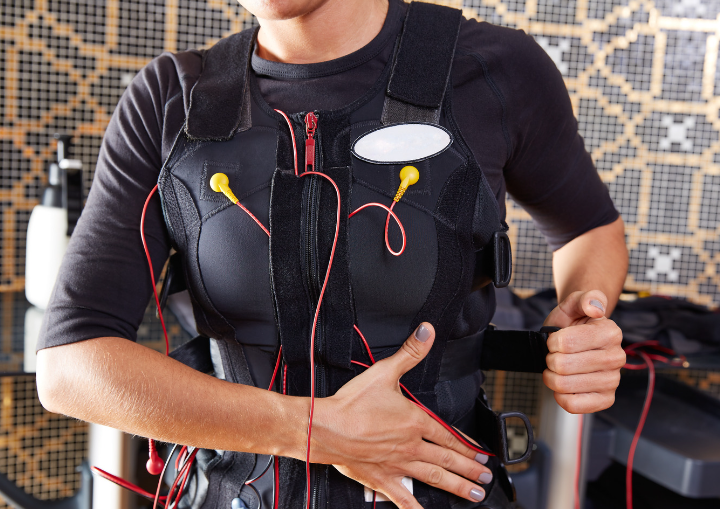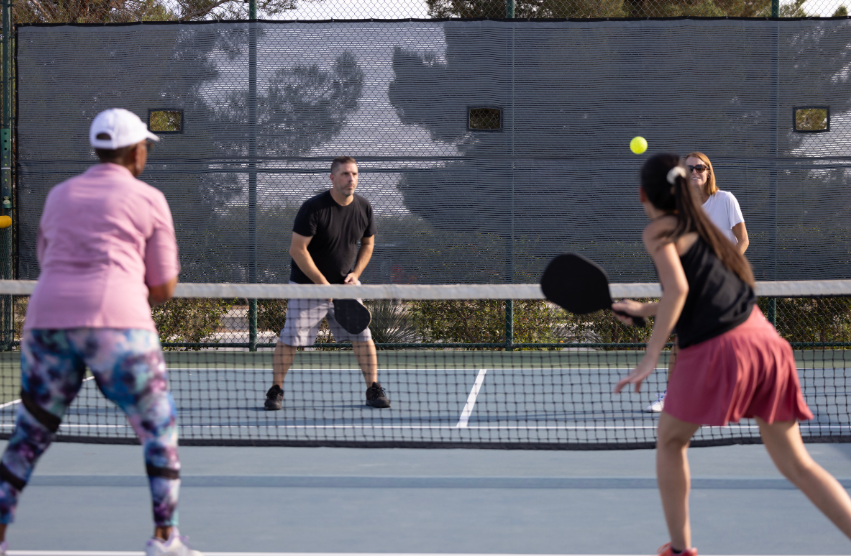Neuromuscular training is a scientifically proven method used to enhance muscle memory and optimize movement patterns. This type of training is especially helpful for pickleball players, as it can help enhance coordination, balance, reaction time, and proprioception (the body’s ability to sense its location, movements, and actions). Here are some neuromuscular training tips specific to pickleball:
- Balance Exercises: Good balance is key to effectively control your movements on the pickleball court. Exercises such as standing on one leg, using a balance board, or performing yoga poses can help improve your balance.
- Agility Ladder Drills: Using an agility ladder, you can perform a variety of drills to improve your speed, quickness, and footwork. These drills not only improve your cardiovascular fitness, but they also enhance your brain’s ability to direct your feet to precise locations quickly.
- Plyometric Training: Plyometrics involve quick, explosive movements and can be beneficial for improving your body’s ability to quickly switch from using one muscle group to another. Jumping exercises, like box jumps or jump lunges, are good examples.
- Functional Movement Drills: These mimic the actual movements you will use in a game. For example, you could practice the motion of lunging to hit a low ball, or rapidly switching from a backhand to forehand stroke.
- Reaction Drills: Improving your reaction time can give you a significant advantage in pickleball. You can do this with a partner, who throws a ball randomly to your left or right, and you must catch it as quickly as possible.
- Proprioception Exercises: Use a Bosu ball or wobble board to improve your body’s ability to sense where it is in space. For example, try standing on one foot on a wobble board, or performing squats on a Bosu ball.
- Hand-Eye Coordination Drills: Juggling, ball-tossing exercises, or using reaction balls can significantly improve your hand-eye coordination, which is vital for pickleball.
- Resistance Training: Using resistance bands can improve your strength and stability, particularly in your shoulders and wrists, which are crucial for powerful and accurate strokes.
- Core Stability Exercises: A strong and stable core is the foundation of good balance and efficient movement in pickleball. Pilates and yoga are excellent ways to improve core stability.
- Visualization: Neuromuscular training also involves the brain. Visualizing your movements before you make them can help enhance your muscle memory.
- Ball Drills: You can perform various drills with a pickleball to improve your hand-eye coordination and reaction speed. Try bouncing the ball and catching it, tossing it against a wall and catching it on the rebound, or practice striking it with your paddle.
- Shadow Play: This technique involves visualizing and then physically mimicking specific movements. You can shadow play your serves, returns, and volleying without a ball. This practice enhances neuromuscular efficiency as it trains your mind and body to work together.
- Fast Feet Drills: Speed and agility are crucial in pickleball. Drills such as rapid toe-taps on a step or quick in-and-out steps through a ladder or around cones can help improve foot speed and coordination.
- Medicine Ball Throws: These exercises can help improve your core strength, balance, and coordination. Medicine ball throws mimic the rotational movements of the body during pickleball play and can help strengthen the muscles used in hitting the ball.
- Dynamic Warm-ups: A good warm-up is essential for preparing your muscles for action and avoiding injury. This could include jogging, high knees, butt kicks, side shuffles, or arm circles. The aim is to get your body moving in ways that are similar to the way you move during a pickleball game.
- Paddle Grip Exercises: The grip strength is essential for controlling the paddle and generating power in your shots. You can improve it with exercises using a hand gripper or a stress ball.
- Yoga: Regular yoga practice can help improve balance, flexibility, and core strength. It also fosters mind-body connection, aiding in better body awareness and control.
- Tai Chi: This ancient Chinese martial art is excellent for improving balance and coordination. The slow, deliberate movements require a high degree of body control and can be a useful part of neuromuscular training.
Remember, everyone’s body is different. Start slow, focus on form, and gradually increase the intensity of your workouts to avoid injuries. It may also be beneficial to work with a coach or physical therapist to ensure you’re performing exercises correctly and focusing on the right areas






